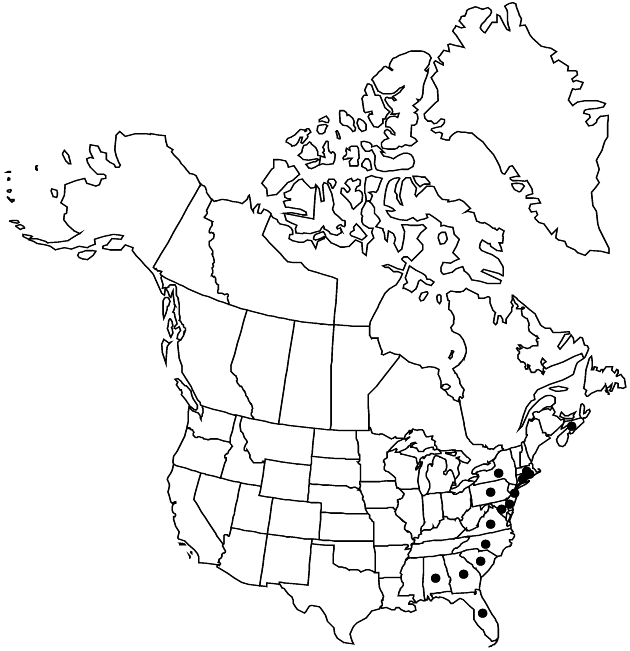Solidago latissimifolia
Gard. Dict. ed. 8, Solidago no. 14. 1768.
Plants (40–)100–300(–400) cm; rhizomes creeping, elongate. Stems 1–5+, erect, glabrous or branches of arrays puberulent. Leaves: basal and proximal cauline withering by flowering; mid and distal cauline numerous (to 50+ on taller stems), sessile or nearly so (bases of blades sometimes subauriculate and rounded to short petioles), blades elliptic or lanceolate-elliptic, larger 60–150 × 15–35 mm, little reduced distally, margins serrate to entire, not 3-nerved, obscurely to obviously reticulately nerved, faces barely rugose, glabrous. Heads 35–800, in paniculiform arrays, sometimes leafy-bracteate, with short or elongate, slightly to strongly recurved, secund branches. Peduncles 4–10 mm, sparsely to moderately strigose; bracteoles 1–3+, linear-lanceolate, usually a few near head grading into phyllaries. Involucres campanulate, 4–6 mm. Phyllaries in 4–5 series, strongly unequal, margins apically ciliate, obtuse to rounded, glabrous; outer ovate-lanceolate, inner linear-lanceolate, relatively broad, 0.7–1.2 mm. Ray florets 6–10; laminae 2–3 × 0.8–1.3 mm. Disc florets 4–7; corollas 3–4 mm, lobes 0.9–1.3 mm. Cypselae (obconic) 1.5 mm, sparsely strigose; pappi 3.5–5 mm. 2n = 18, 36, 54.
Phenology: Flowering Aug–Oct (year-round south).
Habitat: Fresh and brackish swamps, thickets, coastal plain
Elevation: 0–80 m
Distribution

N.S., Ala., Conn., Del., Fla., Ga., Md., Mass., N.J., N.Y., N.C., Pa., R.I., S.C., Va.
Discussion
The presence of Solidago latissimifolia in Mississippi has not been confirmed. L. J. Uttal and D. M. Porter (1988) determined that the oldest valid name for this species is Solidago latissimifolia. The common name is based on the long-used S. elliottii (e.g., A. Cronquist 1980; H. A. Gleason and A. Cronquist 1991). Putative S. rugosa × S. sempervirens specimens could be confused with this species, but the hybrids have hairier stems and the petioles of proximalmost leaves ± sheath the stem.
Selected References
None.